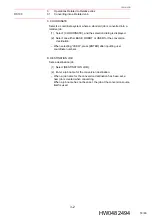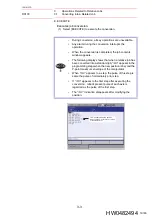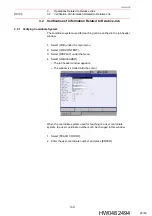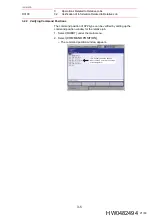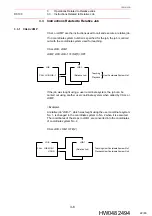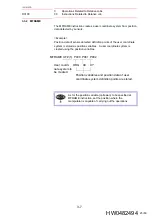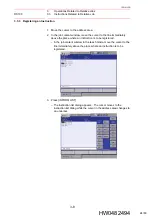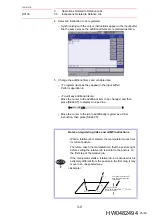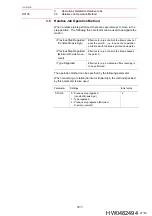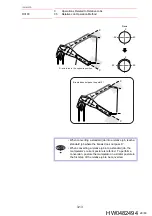
2
Examples of Use of Relative Jobs
DX100
2.2
A Single Manipulator to Work on the Same Type of Workpiece in
Different Locations
2-4
156191-1CD
HW0482494
2.2
A Single Manipulator to Work on the Same Type of
Workpiece in Different Locations
Fig. 2-1: A Single Manipulator to Work on the Same Workpiece in
Deifferent Locations
With the relative job function, a single manipulator can easily work on the
same type of workpiece in different locations in the following two ways.
• By modifying the teaching coordinate
• By converting the user coordinate when operating
2.2.1 By Modifying the Teaching Coordinate
Create a job for a single workpiece, and then shift the job to another
location to create another job.
In this way, create a job at each location, fine adjustment at each position
is possible.
1. Create a job for a single workpiece.
2. Teach a user coordinate system (for instance, UF#1) for the workpiece
in that location.
3. Convert the job created in step 1 into a relative job in the user
coordinate system taught in step 2.
4. Move the workpiece to another location and teach another user
coordinate system (for instance, UF#2) for the workpiece in that
location.
5. Call up the job header display of the relative job created in step 3 and
change the coordinate system to the user coordinate system (UF#2)
taught in step 4.
6. Create a new standard job by converting the relative job of the
modified coordinate system. This new standard job is to be executed
at the location of step 4.
7. To create more jobs for other locations, repeat steps 4 to 6 using other
user coordinate system numbers.
Manipulator
Workpiece
C
A
B
Job taught at location is shifted
to locations and .
C
A
B
14/63


















